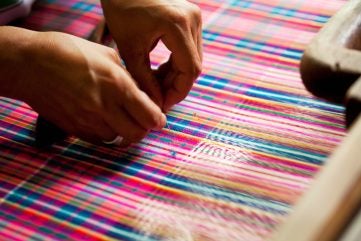
MMI’s 2022 State of the Industry report: Next-gen Materials highlighted that 2022 represented a more “challenging” investment atmosphere for the next-gen materials industry compared to 2021. However, its examination of investments between 2013 and 2022 indicated an upward momentum in terms of both the capital invested and number of deals.
The report also revealed an expansion in the innovator landscape, noting the number of companies exclusively focused on developing next-gen materials has risen to 102 from 97 in 2021 and only 33 in 2013.
Notable funding in the next-gen materials space in 2022
- MycoWorks’ $125m Series C round closed in August, followed by a Series C2 round that closed in October 2022, estimated at $63m
- Natural Fiber Welding (NFW) closed $83m Series B in April, followed by a debt financing of $19.97m in December 2022
- AlgiKnit closed a $15.46m Series A funding round led by Collaborative Fund (also an investor in BOLT, NFW, and Modern Synthesis), which launched a new $200m climate-solution-focused fund with Stella McCartney this year.
- Cultivated leather startup VitroLabs secured Series A funding of $47.40m in May 2022 with investors including global luxury fashion group Kering
- Save the Duck was also acquired for an undisclosed amount.
Industry partnerships for next-gen materials in 2022
Data from the report suggests that in 2022, more established material companies, fashion houses, and automotive manufacturers announced their next-gen material offerings or their in-house R&D to create next-gen materials.
The report shared that partnerships between industry brands and material innovators continued to accelerate in 2022.
- In September, Allbirds released the Plant Pacer, a sneaker made with Natural Fiber Welding’s (NFW) next-gen leather Mirium.
- In November, tannery Ecco Leather — a company from Ecco Shoes, started working with Ecovative to create new leather-like alternatives.
Material Innovation Initiative (MII)’s chief innovation officer Elaine Siu believes it to be an encouraging sign that the next-gen materials industry has grown beyond the innovators disrupting the incumbents.
Siu said: “Technologies and innovation can drastically revolutionise the business by developing environmentally preferred and animal-free materials that match brands’ and customers’ aesthetic, performance, and pricing requirements. Established industry titans are also coming together to build a better materials industry for everyone.”

US Tariffs are shifting - will you react or anticipate?
Don’t let policy changes catch you off guard. Stay proactive with real-time data and expert analysis.
By GlobalDataThe report emphasised the urgent need for multi-stakeholder coalition that can develop collaborative solutions for evaluating environmental impacts of next-gen materials, help implementation of these solutions, and preempt incomplete or negative conclusions made by media sources.
The authors of the report noted that as the next-generation materials industry advances, investors and consumers are keen to scale, go to market and establish price parity.
The report added that for this to happen, next-generation materials will need to be high-performance, animal-free, and environmentally preferable.
MMI’s ‘Next-gen materials: A 2023 assessment of the potential for U.S .consumer adoption‘ that was published last June found that 78% of consumers were willing to pay the same or more for next-gen materials compared to conventional options.



